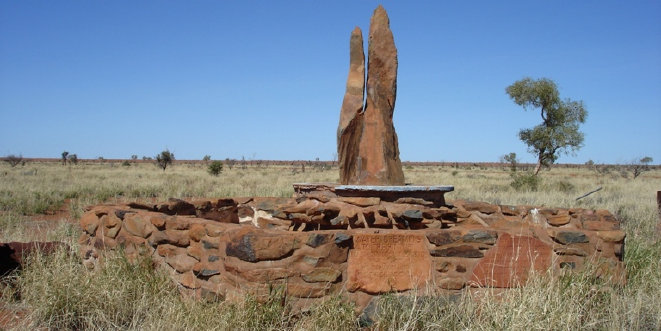Australia So Much to See


The Last Desert Nomads: On 24th October 1984, a family of nine Pintubi, referred to as the ‘Lost Nomads’ or the ‘Pintubi Nine’, were reunited with their extended family at Kiwirrkurra. Until this time the small group had lived a traditional nomadic life moving from waterhole to waterhole. It is believed they had become separated from other Pintupi more than twenty years earlier, and when found, the group had never seen a motor vehicle, worn clothes nor had any contact with Western society.
It is only thirty years ago today (24th October 2014) that nine Aborigines came from living an isolated traditional life in the Gibson Desert in Western Australia to join the community of Kiwirrkurra. That a group of people could live unnoticed, without having contact with others or seeing a white man or a vehicle shows the remote and inhospitable land in which they survived. They were fit and healthy.
During the decades from 1940, nomadic Aboriginal people had moved, or been moved, into settlements. Many of the Pintupi lived at Papunya and Haasts Bluff in the Northern Territory.
During his road surveying in the 1960sLen Beadell told of meeting Aborigines who had never seen a white man or a vehicle.
In the 1970s, Kintore (Walungurru) was established to allow the western desert people to live closer to their homelands. Kintore is now a community of around 450 people, with a smaller number living in outstations in the area.
Kiwirrkurra was established as an outstation for visiting the homelands in 1982, and when an equipped bore was installed in 1984 some of the Pintubi people became permanent residents there. Kiwirrkurra now has a population of about 150 people.
In October 1984, a family of nine Pintubi who had been living a traditional nomadic existence around Lake Mackay made contact with two men from Kiwirrkurra when they saw campfire smoke. While the encounter proved frightening for both parties and the desert nomads fled, the men returned to Kiwirrkurra and alerted the community to the tribesmen. After searching for three days, the group were found as they tried to hide. The children remember being grabbed and put into a car. The men gave them their shirts to cover their nakedness. It was a frightening journey for the girls who could not comprehend the vehicles speed of movement and thought the trees were moving past them. The elder members of the group of nine recognised some of the people at Kiwirrkurra as their relatives who they had been separated from for twenty years. With the promised of constant food and running water, the Pintubi Nine chose to stay in the community. Read the Story of the Pintubi Nine and read their stories on Noman's Land.
Were the Pintubi Nine the last desert nomads? Whether the Pintupi Nine were “the last of the nomads” is debatable. According to anthropologist David Brooks, an indigenous family numbering four or five walked out of the Great Victoria Desert and into the community of Blackstone (Papulankutja), several hundred kilometres south of Kiwirrkurra, in 1985. Read the story at the bottom this article.
Moving into settlements and having access to western diet and exposure to western contagious diseases has taken its toll on the health of desert Aborgines. Lack of gainful activity has created a generation of people who do not have to work for their tucker, can receive social services payments, and many have turned to alcohol drugs and petrol sniffing. Read about problems in the Kiwirrkurra community.
